Alle Updates and news from the HydrogenChain project!
The transparent representation of origin proofs for green hydrogen is a highly complex objective. Given the intricately interconnected power and gas grids, energy amounts from sustainable sources can currently only be balanced out and traced back. A core question in our research project is whether the supply chain for each unit of hydrogen produced can be traced back. To examine this, we've developed a showcase that makes our solution approach tangible.
The MVP 1.0 exemplifies the production, further processing, and consumption of green energy for origin proofs. The cloud-based platform communicates with our custom-built private blockchain, "HydrogenChain," which is based on the Ethereum protocol. This is done via an interface with the open-source wallet MetaMask. The production and further processing of technical systems, as well as the consumption of energy amounts (e.g., by end-users), are captured using Smart Contracts on the decentralized database.
Additionally, we've developed a Certificate Service that allows interested parties who are not registered on the platform to transparently retrieve the transaction histories of the systems. This way, producers and consumers alike can certify the sustainable origin sources of their energy amounts.
The current version:
To use the platform, either an existing MetaMask Wallet must be linked or a new one created. The platform automatically reads and processes information from the wallet.
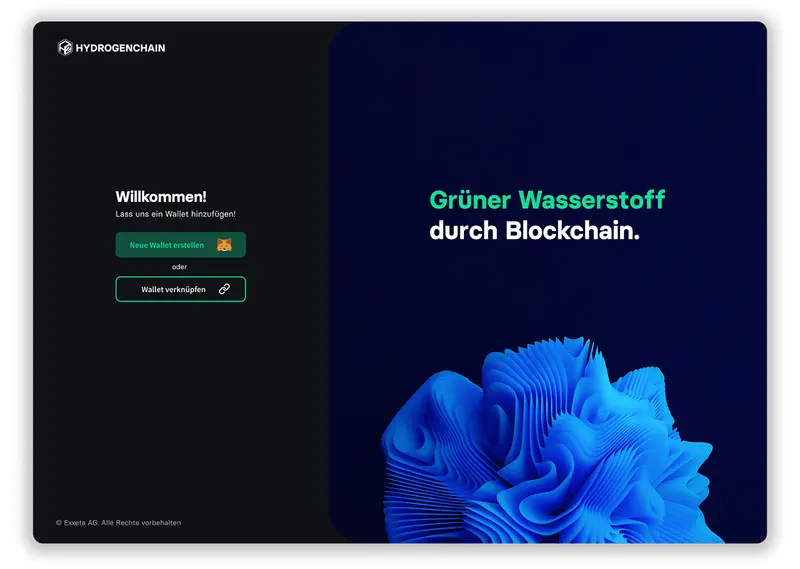
Both end consumers and facility operators have to provide basic data such as name, location, and description. Operators of technical facilities, when creating a facility, also select the type of facility. Currently, the following types are supported:
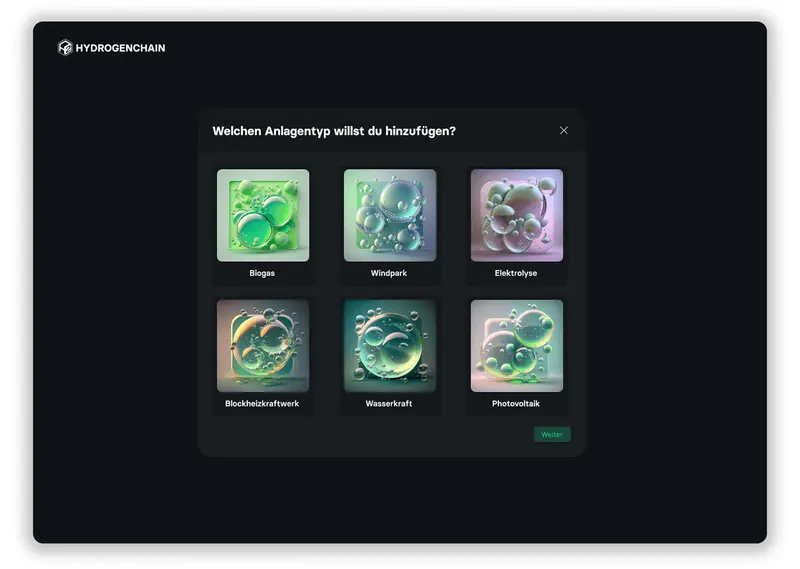
The Facility Dashboard is the user's central hub.

The Facility Dashboard incorporates the following features:
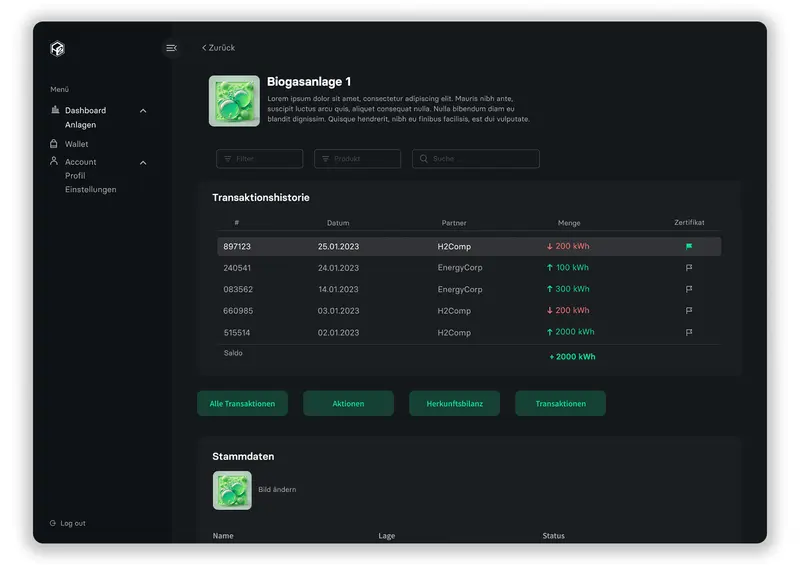
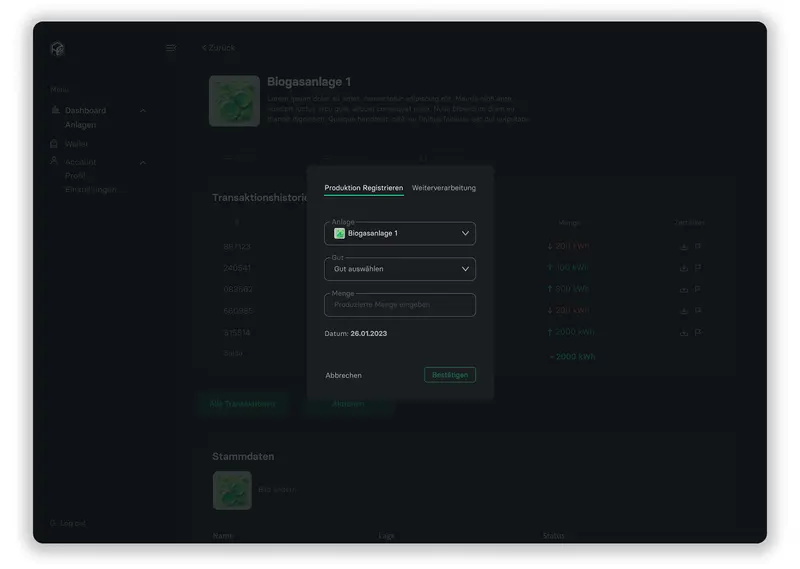
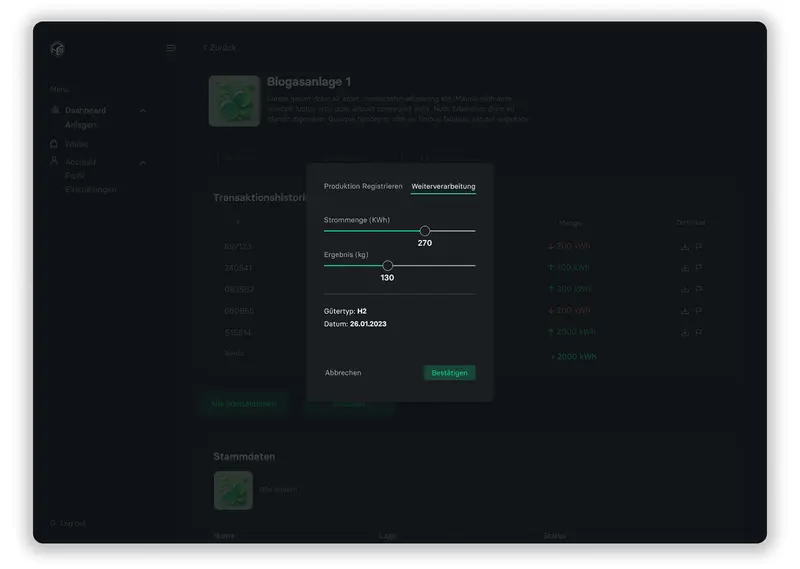
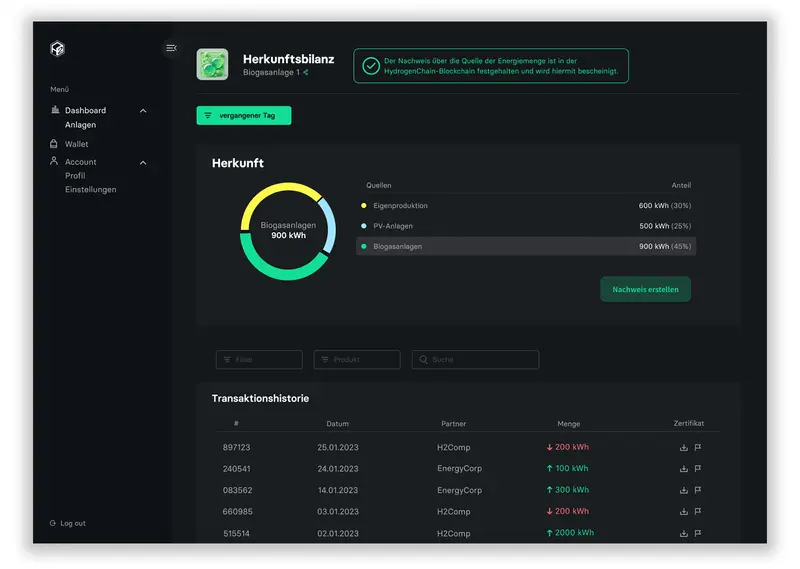
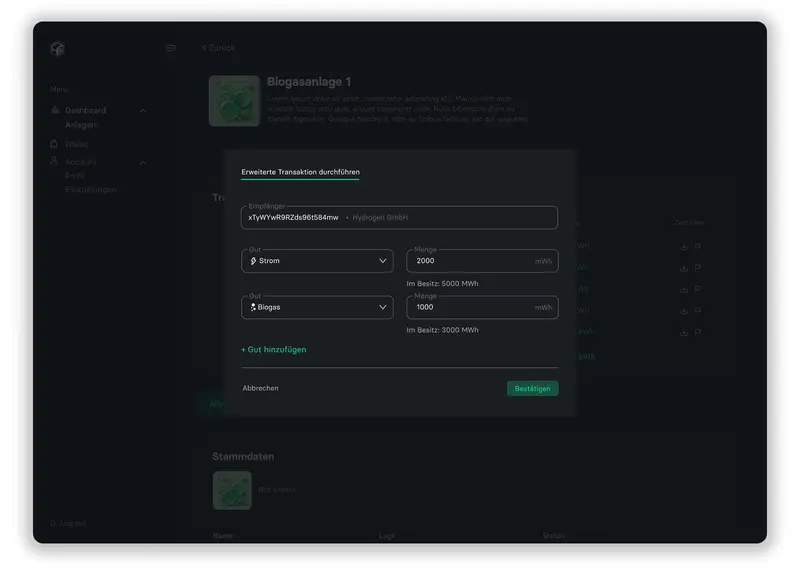
The MVP 1.0 represents an initial and important step, but we still have a long way to go.
For the expansion of the first MVP, an authentication entity is planned, which authorizes production facilities to mirror their energy amounts via the HydrogenChain. Additionally, an interface with smart meters is planned to automatically register produced amounts, simplifying the evidence process. Furthermore, facility operators should be able to centrally manage their own facilities. We're also comparing alternative blockchain architectures to ensure precise mapping of energy sources and to review the scaling of processes for international trade.
In summary: